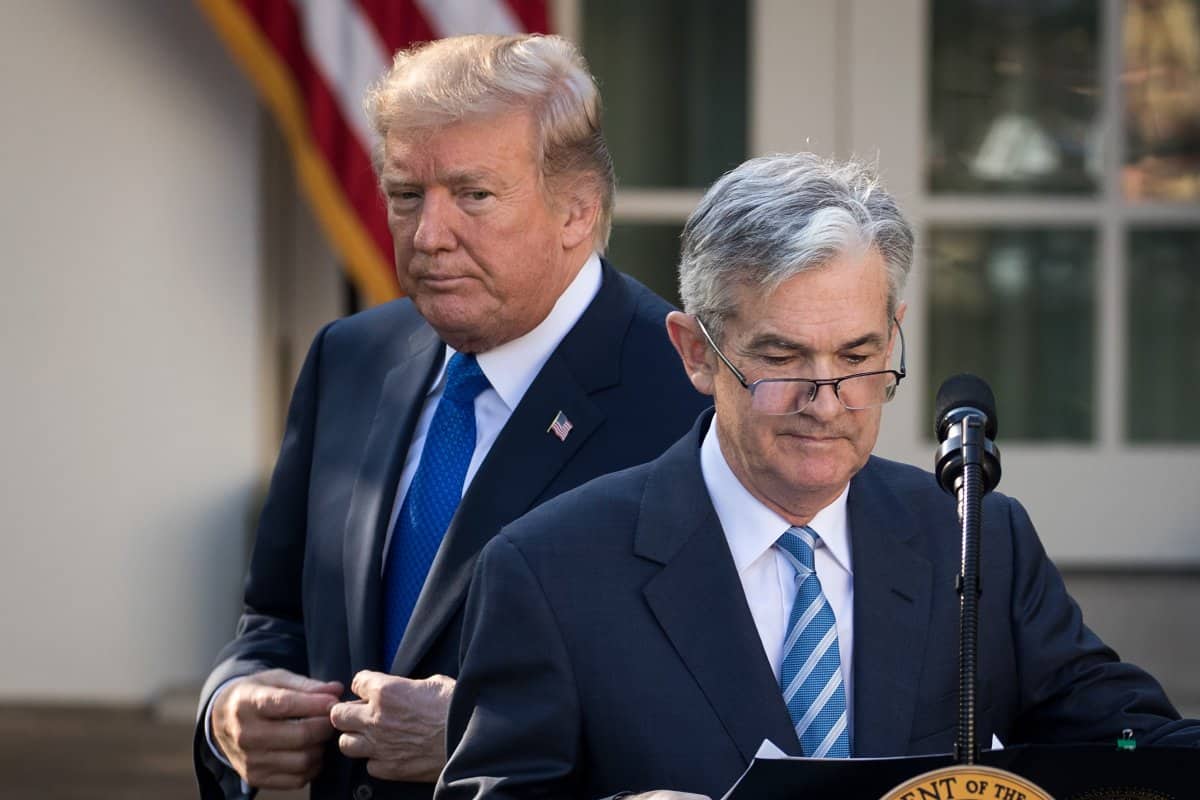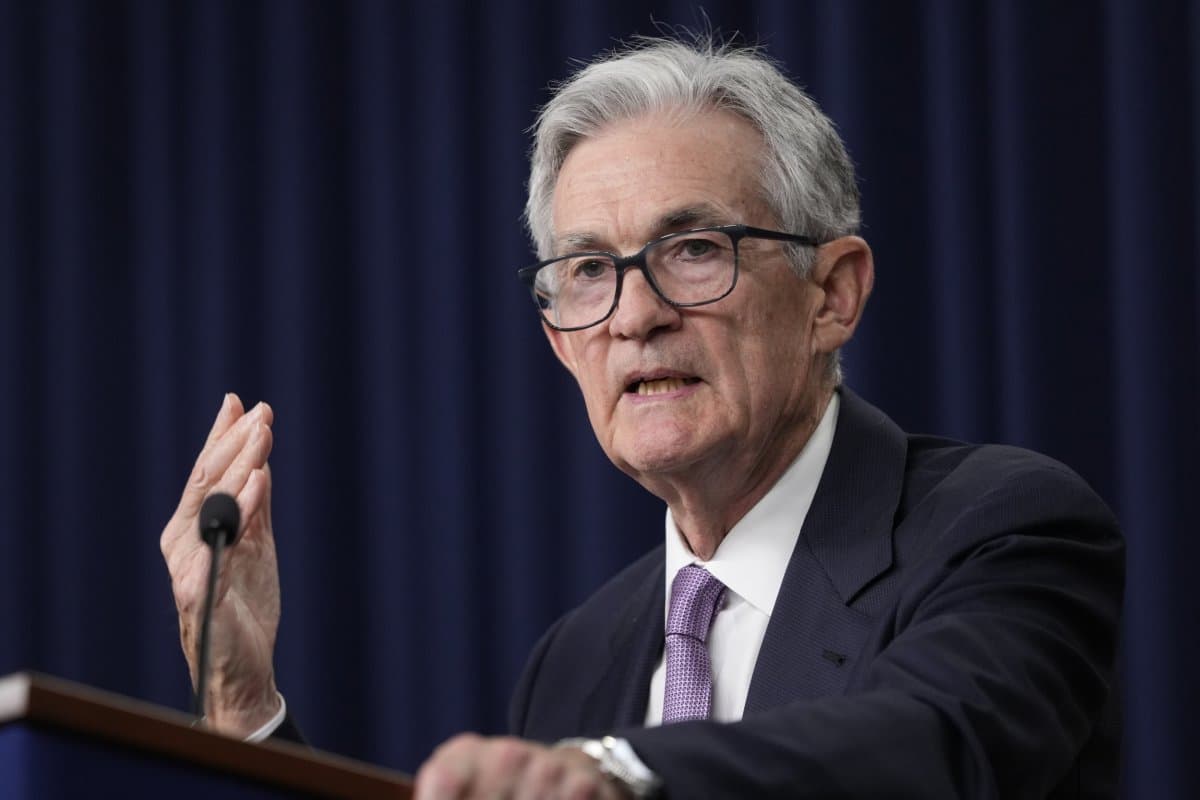Donald Trump likes to talk about having “the best people” working for him. But one of those people is largely responsible for one of the greatest feats of economic engineering in modern history, which has been virtually unremarked upon by the former president during the campaign.
Inflation in the United States dropped last month to its lowest level since it began surging over three years ago, according to government data released Thursday, adding to a wave of positive economic news in the final weeks of the presidential race and a growing sense that policymakers have done what many said they couldn’t — cooling prices without triggering a recession.
With inflation nearing the Federal Reserve’s 2 percent target, Fed Chair Jerome Powell has started to lower interest rates, offering relief to debt-burdened businesses, credit card holders and potential homebuyers. This shift marks a significant change from the series of aggressive rate hikes that defined much of Powell’s tenure during the inflation surge.
Those earlier Fed rate hikes, combined with external factors like falling gas prices and improvements in global supply chains, have driven inflation down from its peak of 9.1 percent in June 2022. The encouraging decline has fueled expectations that the Fed will cut rates by a quarter point at upcoming meetings, further solidifying hopes for continued economic recovery.

U.S. President Donald Trump looks on as his nominee for the chairman of the Federal Reserve Jerome Powell takes to the podium during a press event in the Rose Garden at the White House, November 2, 2017 in Washington, DC. Current Federal Reserve chair Janet Yellen’s term expires in February. Despite guiding interest rates and the economy through challenges, Jerome Powell remains largely unacknowledged by Trump.
Photo by Drew Angerer/Getty Images
Despite this, Powell remains largely unacknowledged by Donald Trump, who appointed him to run the central bank seven years ago.
The former president has shown little inclination to credit Powell’s role in shaping the economic landscape. Instead, following the latest Consumer Price Index (CPI) report, Trump and his allies quickly criticized the Biden-Harris administration, the Federal Reserve, and even Powell directly.
“The fact is that the Federal Reserve brought the interest rates down a little too quickly,” Trump said Thursday during an appearance at the Detroit Economic Club. “It was too big a cut, and everyone knows that was a political maneuver before the election,” he added.
That was Trump’s most direct critique of Powell in months, a departure from his previous focus on blaming the Biden administration for a what he says is a weak economy. Trump’s remarks came after his initial reaction to the September rate cut of 50 basis points, reflecting a shift in his messaging strategy.
Powell, meanwhile, has faced a challenging task over the past four years as the Federal Reserve sought a “soft landing,” aiming to reduce inflation without triggering a recession. According to economists consulted by Newsweek, Powell’s 2017 appointment was seen as a key decision in Trump’s administration, although its outcomes diverged from initial expectations.

Federal Reserve Board Chairman Jerome Powell speaks during a news conference at the Federal Reserve in Washington, Sept. 18, 2024. New data suggests, Inflation has retreated steadily, approaching the Fed’s 2% target and leading Powell to declare that it was largely under control.
Ben Curtis/AP Photo
“President Trump, in choosing Powell as Fed Chair, broke with tradition by not reappointing Janet Yellen. Ironically, in choosing the Republican Powell, he ended up with a less dovish Fed than he might have had with Yellen,” said Joseph Foudy, a professor of economics at NYU’s Stern School of Business.
During Trump’s first term, tensions ran high between the administration and the Fed, especially as Trump frequently criticized rate hikes in 2018. He even considered firing Powell, though many legal experts viewed this as beyond presidential authority. The Fed eventually reversed course, cutting rates in 2019, months before the pandemic scrambled the U.S. economy.
When Biden reappointed Powell to a new term, Trump’s skepticism only grew. As the economy has gradually improved, Trump has refrained from crediting Powell for these gains, despite the fact that Powell’s role as head of Fed was made possible by Trump’s own decision. This omission may represent a missed opportunity for Trump’s campaign to claim a measure of economic success.
Political analysts like Todd Belt, director of the Political Management program at George Washington University, say Trump’s reluctance to acknowledge Powell’s contributions unsurprising.
“You have to think like Trump. His main goal is to win, and he wants to make the election a referendum on the current administration. So, if there is any good news, he sees that as benefiting the administration he’s running against,” Belt told Newsweek.
Trump’s campaign has instead focused on economic challenges under Biden, highlighting high living costs and inflation’s impact on ordinary Americans. He often points to rising grocery prices as evidence of the current administration’s failures, emphasizing that food prices have risen nearly 25 percent from pre-pandemic levels.
This narrative, according to Foudy, leaves little room for recognizing the Fed’s role in stabilizing inflation.
“Given that he is arguing inflation has not fallen, it’s hard to simultaneously take credit for the Powell appointment,” Foudy noted. This tension between Trump’s messaging and the economic reality illustrates the complexities of the current political landscape.
Adding to the debate is Trump’s stance on presidential control over the Federal Reserve. He has suggested that, if re-elected, he should have the power to influence interest rate decisions directly—an idea that represents a significant departure from the well-worn tradition of central bank independence.

Sale prices are displayed for items at a grocery store on September 10, 2024 in San Rafael, California. Food prices have surged nearly 25 percent since the start of the pandemic, though that is slowing down—groceries are up 1.3 percent compared to a year ago.
Justin Sullivan/Getty Images
“Former President Trump has more recently spoken about wanting the right to set interest rates if re-elected, arguing that it’s wrong for a president to be unable to control the Fed,” Foudy said. Such statements underscore Trump’s broader approach to economic policy and his desire to reshape the role of the presidency when it comes to monetary policy.
The improving inflation picture follows a healthy jobs report released last week, which showed that hiring accelerated in September and that the unemployment rate dropped from 4.2 percent to 4.1 percent. Additionally, the economy expanded at a solid 3 percent annual rate in the April-June quarter, with similar growth likely continuing in the recently completed July-September quarter.
These positive economic indicators—cooling inflation, solid hiring, and steady growth—could erode Trump’s advantage on economic issues in the presidential campaign, as measured by public opinion polls.
In some surveys, Vice President Kamala Harris has pulled even with Trump on the question of who would best handle the economy, after Trump had previously maintained a decisive lead over President Joe Biden on this issue.
Trump has said that he would not reappoint Powell if elected to a second term. Should Harris win the presidency, she has not telegraphed whether she would reappoint Powell when his term ends in 2026. As a senator, she voted against his confirmation in 2018, choosing to side with a bloc of progressive Democrats.
Powell was asked recently whether he would remain as Fed chair if reappointed by the next president. He responded, simply: “I have nothing for you on that today.”








